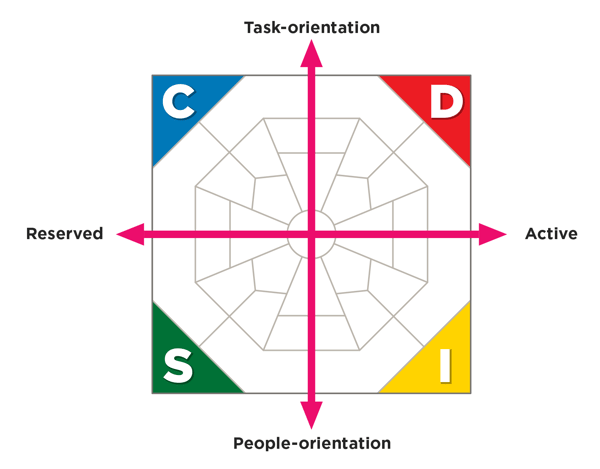I-styles are spontaneous and people-oriented. How are they different from the other DISC styles?
4 DISC Styles
 DISC theory identifies 4 behavioral styles. It states no one style is better or worse than the other ones. DISC helps you understand yourself and others better by identifying your personal preferences. While you tend to lead with a dominant style, everyone has all 4 styles; some styles just feel more natural, while others take more energy.
DISC theory identifies 4 behavioral styles. It states no one style is better or worse than the other ones. DISC helps you understand yourself and others better by identifying your personal preferences. While you tend to lead with a dominant style, everyone has all 4 styles; some styles just feel more natural, while others take more energy.
The Extended DISC® tool helps describe your communication style, your decision-making style, how you tend to show up in a team, etc. Your results do not limit you nor do they determine your success; you can be successful in any role you choose. In fact, the most successful people have a keen sense of who they are. They know their strengths and they are comfortably aware of their development areas. Best of all, they know when to use their strengths and when to modify their style to better suit the situation.
Today, let's focus on I-styles, one of the 4 main styles.
Identifying I-styles

I-styles, like the other 3 styles, have their own unique strengths and development areas. I-styles are often described as open, friendly, and spontaneous. You usually go to your I-style colleagues if you want positive, and often effusive, feedback. I-styles tend be more energetic; moving and making decisions quickly. They can appear disorganized; their tendency to focus on people causes them to sometimes overlook tasks and details.
We tend to describe I-styles as energetic, emotional, and impulsive. They often talk a lot and may not be listening. I-styles prefer to focus on the big picture, rather than details. Change can be exciting. They are also the huggers of the styles and find personal space lines to be blurred.
Communication Style
 I-styles often communication in one direction – they talk and you listen. They can sell their ideas well by their charisma and inspiring communication style. I-styles like to talk, but often gloss over the details. They also enjoy being the center of attention,
I-styles often communication in one direction – they talk and you listen. They can sell their ideas well by their charisma and inspiring communication style. I-styles like to talk, but often gloss over the details. They also enjoy being the center of attention,
I-styles are more likely to avoid discussing difficult topics; preferring to focus on the positives. They are good in giving constructive feedback. I-styles may jump from subject to subject; often getting excited about each new topic.
Preferred environment
I-styles prefer friendly and more fast-paced environments; chaos may feel energizing and optimistic for change and new opportunities. They want to be in a setting free from routine and structure.

